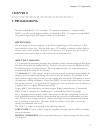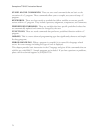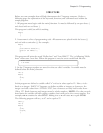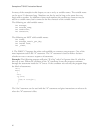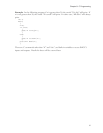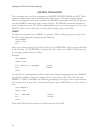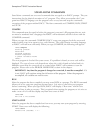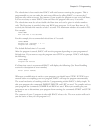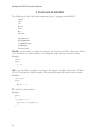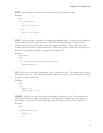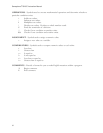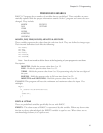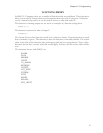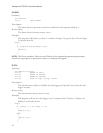85
Chapter 8: C Programming
The reload time is how much time ISACC will wait between running the program. This is
programmable so you can make the unit most efficient by telling ISACC to execute the C
program only when necessary. For instance, if you require the program to run every half hour,
it is not necessary to waste ISACC’s time and have the program run every 10 seconds.
The reload time must be at least double the Run time and can be given in whole numbers
only. The Run time is provided when you RUN your program. So if your Run time is 1.5
seconds, the Reload time must be at least 3 seconds. The maximum number of seconds is 255.
For example:
ISACC>run
Run time was 0.760 seconds
For this example, the recommended reload time is 2 seconds:
ISACC>start
Reload time (seconds) = 2 > 2
Program now running
The default Reload time is 2 seconds.
After the program is started, ISACC will run the program depending on your programmed
Reload time. If you want to stop the program enter STOP at a prompt. ISACC will display
the following:
ISACC>stop
Program now halted
If a Run time error is encountered ISACC will display the following: (See Error Handling
section for description of error number)
Error (error number)
Whenever a modification is made to your program, you should enter STOP. If STOP is not
entered before recompiling your new program, ISACC will stop the program automatically.
The actual mechanics of working with the C programming within ISACC is fairly simple. To
edit your program, the commands INSERT, DELETE, and LIST are used. To compile and test
your program the commands COMPILE and RUN are used. When you actually put your
program to use or discontinue your program from running, the commands START and STOP
are used.
The contents of your C program is what tells ISACC what to do. The next section will teach
you the basics so that you can program in C.



